“Tavernier Travel Book”, “Thévenot Travel Book”, “Life in the Topkapı Palace-Memoirs of Albertus Bobovius or Santuri Ali Ufki Bey”, “Tournefort Travel Book”, “Reinhold Lubenau Travel Book: 1587-1589 in the Ottoman Country”, “A Slave in the Ottoman Empire: Bretten Michael Heberer's...
Through the Lens of the Other What is Entertainment Culture in the Ottoman Empire?
Zeynep DİNÇER BERDİBEK
Summary:
In addition to the basic needs of human beings such as eating, drinking and sleeping, it is necessary to talk about entertainment. Because it is only possible to get out of the suffocating, tiring or routine order of daily life. This understanding, which can differ in almost every period and place, has not escaped the attention of travel writers. Especially Western travelers have benefited abundantly from comparisons, criticisms and comments while conveying their observations on this subject.
In this study, the understanding of entertainment in the Ottoman lands will be examined with the attention of Western travelers; explanations on the subject will be explained with various comments and photographs.
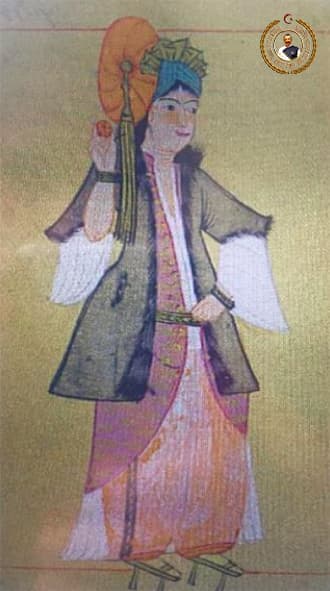
Login
The travels of mankind for many purposes such as wanderlust, curiosity, entertainment, religion, politics and culture have mostly been remarkable, different and instructive. Some travelers wanted their observations to be known or because they went on a trip with this mission, they wrote down their observations without wasting time and passed their knowledge to the next generations.
Picture: Turkish woman going to Turkish bath.2
Of course, in these important cultural materials; It is also possible to see the effects of the trip owner's perspective, culture, profession, beliefs or knowledge. This situation becomes more evident especially in the transfers of another culture.
For example, a Western traveler's evaluations of the West are not the same as those of the East. Because the East; different, other and foreign to him. However, the comments and observations made by the other have an important function as they allow the culture to be evaluated from a different perspective.
For this purpose, in this study, by considering the travel books of Western travelers; Here, the Ottoman perception of entertainment is emphasized. In addition, the explanations were evaluated together with the comments of the travelers and the examples they gave.
The itineraries covered are:
“Tavernier Travel Book”, “Thévenot Travel Book”, “Life in the Topkapı Palace-Memoirs of Albertus Bobovius or Santuri Ali Ufki Bey”, “Tournefort Travel Book”, “Reinhold Lubenau Travel Book: 1587-1589 in the Ottoman Country”, “A Slave in the Ottoman Empire: Bretten Michael Heberer's Memoirs 1585-1588”, “Turkey Diary 1573-1578”, “Fresne-Canaye Travel Book 1573”, “Chardin Travel Book: Istanbul, Ottoman Territories, Georgia, Armenia, Iran, 1671-1673”, “In the Presence of the Sultan , Embassy Diary 1616-1618”, “In the Empire of the Magnificent Solomon” and “Journey to the City of Sultans: 1571-1581” are twelve in total.
Since these texts were written in the 16th and 17th centuries, the evaluations directly cover these centuries.
Texts written in the 16th century:
A Slave in the Ottoman Empire: Memoirs of Michael Heberer of Bretten, Fresne-Canaye Travelogue, Turkey Diaries, Reinhold Lubenau Travel Book, Journey to the City of Sultans in the Empire of Suleiman the Magnificent. The texts written in the 17th century are: Chardin Travelogue, Tournefort Travelogue, Tavernier Travelogue, Thévenot Travelogue, In the Presence of the Sultan: Embassy Diary, Life in the Topkapı Palace-Albertus Bobovius or Memoirs of Santuri Ali Ufki Bey.
travelers; He has different professions such as pharmacist (Reinhold Lubenau), herbalist (Joseps de Tournefort), ambassador (Stephan Gerlach), slave (Michael Heberer from Bretten), merchant (Jean-Baptiste Tavernier). For this reason, the effects of the professional point of view in the examinations are also palpable.
In the texts written by the travelers, some Ottoman values (eg army order, trade, justice) were found respectable and beautiful, while others were conveyed with negative feelings (religion, government, some forms of entertainment). For example, Reinhold Lubenau is always pessimistic in his comments towards Muslims, as he is a deeply religious person. Or a similar approach draws attention in Stephan Gerlach's travel book.
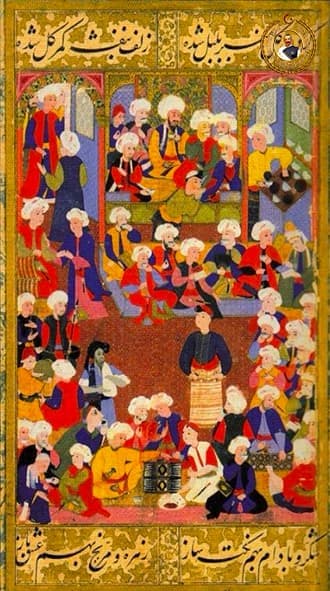
In the writing of the texts, different styles such as letters, diaries or politics have been used. Lectures; It also varies according to the author's travel time, style and purpose of travel. For example, since the Chardin Seyahatname is more of a political treatise, different topics are not covered much.
In line with all these attention, the writers' perspectives on entertainment also differ. Writers cannot hide their astonishment in the narrations, as some of them are games or entertainment that the travelers have not encountered before. Although some forms of entertainment are suitable for classical perception, they differ in terms of implementation and contain many criticisms. However, entertainment has not been neglected in the texts, and almost every detail has been emphasized.
Before moving on to the perception of entertainment in travelogues, it would be appropriate to classify the concept of entertainment:
Entertainment subjects Entertainment times Entertainment venues Entertainment types
Entertainment Venues in Ottoman:
While the general forms of entertainment are held in large areas where the majority of the public is included, the more specific forms of entertainment take place in a more limited area. At Square, Bayezid Mosque square, the vicinity of Hagia Sophia Mosque, houses, gardens, streets, countryside, forest, hammam etc. are frequently mentioned.
Fun Times in the Ottoman Empire :
The beginning of spring, holidays, weddings, circumcision, victory celebrations, festivities or special ceremonies are the main periods of entertainment.
Types of Entertainment in the Ottoman Empire :
Although the types of entertainment are not subject to a full classification, in general, sports-based entertainment, mind-based shows, skillful shows, games, music, traditional forms of entertainment, etc. can be categorized as
Entertainment Venues in Ottoman
The countryside is a place where people have fun and have a good time, especially in the spring months. Feasts, feasts, ceremonies and victory celebrations are often celebrated in the streets and in large expanses. In addition, coffee houses and baths can be shown as entertainment venues on long winter nights or more special shows.
Bath:
Especially in the
Ottoman Empire, the hammam is known as both a bathing place and an entertainment area. Tavernier mentions the existence of a total of fifty baths in the city and its suburbs. These are open to women at certain times and to men at certain times. Gathering of women here requires an important preparation process. There is a lot of time spent preparing food to eat and having fun together.1
Picture :Holiday place entertainment-15
Coffee shop:
The coffeehouses, where especially men gather and come together, are areas where conversations are made, stories are told, and various games and shows are exhibited, especially Karagöz.
Fields, forests and streets:
Especially the countryside, which is the place of Nowruz celebrations, is also the place where Ramadan and Sacrifice Holidays are celebrated. Of course, fairs were held in large and wide squares for these ceremonies, and the people were entertained together. Various shows, food and drinks, and collective entertainment with music were organized. Forests are also places for hunting fun:
Fun Times in the Ottoman Empire...
Weddings, feasts, hunts, the arrival of spring, the Sultan's enthronement, etc. are certain times for collective entertainment.
Weddings in the Ottoman Empire:
Mutribâ al elüne sâzını chat demidür Sâkiyâ sun berry rose-color ki ?isret demidür "Karamanlı Aynî"
Before moving on to the wedding entertainment in the Ottoman period, it is necessary to tell the ceremonies of asking for a girl. First of all, the groom cannot see the girl while the girl is wanted. It's all about his luck that he can see the girl walking around the garden with some collaborators. Normally the groom does not know what the bride's face is like. Because women cover their faces with a black veil woven from hair. Although the young girl can see outside, those outside cannot see her face because of her veil.
You can only have an idea about the bride's height. It is not known whether he is pale, what is the color of his skin, or whether he is cross-eyed. For this reason, men are forced to marry blindly. 7 If the girl's family also accepts the opportunities offered by the groom, the giving ceremony is completed and the wedding entertainment begins at the specified times. Everyone puts on their beautiful clothes and is adorned with precious jewels. The wedding venue is like a festive place.
On horseback, accompanied by musicians, the wedding procession goes to the festive place. Various gifts are sent to the bride's house on the backs of rattle donkeys. Men and women dance among themselves, eat and have fun. Various candies and gifts are distributed. The man pays the marriage allowance to the girl's family as a result of his marriage. According to Turkish customs, a man can marry seven women. However, the main condition here is that the man can pay the marriage fee.8
A feast consisting of various dishes is prepared at the wedding. Various rice dishes, mutton pieces, roast pigeon, sweets and fruit are also available. As a beverage, guests are offered sherbet.
There are female instrumentalists for women who have fun among themselves. They also have their own unique instruments. For example, they have long-handled spoons in their hands and they have fun by clicking them. At the same time, women play games with each other. They also move their bodies exaggeratedly.9
Holiday:
Once a year, the people of the world will be hurrem.
Many travelers came across two religious holidays celebrated by the Ottomans during their travels. During the holidays, almost every detail was explained at length, sometimes with different interpretations, observations were written down. Some travelers classified the holidays as small and big holidays. Eid-al-Adha was conveyed by Muslims with particular care in terms of slaughtering and sharing animals.
Sometimes the slaughter of animals is associated with brutality, and it has been explained that this is not a very fair situation. On the other hand, the celebrations made by people after the month of Ramadan in Ramadan are explained. As a result, the people who came together in the meeting squares in both celebrations described this situation with excitement as they found themselves in a great fun.
The news of the arrival of Ramadan is given by the watchers who watch the crescent in high places in return for a certain tip. Thereupon, the news is announced to the public orally and the Ramadan ball is thrown. The minarets are equipped with oil lamps and they are lit every evening for a month. This month, the days and nights have almost changed places for the Turks.
As dawn approaches, eating and drinking cease, and in the evening nothing is eaten until the moon appears. At the time of iftar, everyone drinks and has fun. Conversations are held with musicians and puppeteers (Karagözcüler) in coffeehouses.12
Figure 10: Bride depiction. Picture 11: A wedding procession in the Ottoman Empire.
Eid al-Fitr comes after the month of Ramadan. After the festive prayer is completed, the celebrations begin, alms are distributed, and entertainments are organized.13
Gerlach, describing the Ramadan Feast that coincided with on January 14, states that today the Turks wear their most beautiful clothes and wander around the city all day long and have fun. In addition, while people getting on a carousel, swing or car are having fun, they also share bread, cookies, muffins, pears, etc. to each other. they give gifts.14
Today is the most joyful celebration day of the Turks. All squares and streets are decorated. There are oranges, pomegranates, donuts and bagels around. Swings hang in certain places, those who sit on it swing quickly and try to catch the donuts hanging higher. On the one hand, drums and zurnas are played. Good smells are sprayed and the surroundings start to smell nice.16
Tournefort, on the other hand, tells that they were in the city of Heraklion while describing the Small Feast, that is, the Feast of Sacrifice. After stating that sheep and lambs were slaughtered at the doors of the houses, he said that the feast lasted for three days.17
Reinhold, unlike these, reminds the Janissaries and the Novice Boys that these days they roam the streets and play kopuz and violin.18
Schweigger mentions the importance of greeting these days and states that when people meet, they say "holiday (Lik Wairam)". In addition, some Janissaries and Acemoğlans wander the streets with rose water in their hands and take out their pocket money. But this sometimes goes as far as bullying; because these soldiers do not leave people until they get paid.19
Deaths in the Ottoman Empire :
An entertainment for death in the tradition of Tatars living in Ottoman lands is quite interesting. According to this entertainment mentioned in Turkey Diary, if a person dies as a result of being struck by lightning, a different funeral ceremony is arranged for him. In this glorious and honorable ceremony, it is believed that God loves the deceased very much and puts him in the place of his son. Thus, because he touched that person with his hand, he was struck by lightning. It is said that because of this blessed cause of death, Tatars organize a great feast in honor of the deceased, eat, drink and have fun.20
Celebrations Before and After the War in the Ottoman Empire:
In the Travelogue of Reinhold, it is stated that the Turks held a victory ceremony before going to war. The purpose of this is to accept that the war has been won before it even starts. For this reason, pre-war people had various entertainments and were motivated by eating and drinking.21
Hunting Entertainments in the Ottoman Empire:
During the Ottoman period, hunting parties were not only special entertainments belonging to the Sultan, but also among the sports that the people resorted to. The hunts that Tavernier mentions took place mostly in and around İzmir. This is a place close to the mountains and where prey is plentiful. For this reason, plenty of game animals are hunted almost everywhere.22
Bretten shares the Sultan's hunting fun. According to this, when the Sultan goes hunting, some animals are released and dogs are allowed to catch them. This causes the hunting area to be lively and the environment to move: “...they released the dogs. A rabbit suddenly appeared and the dogs followed him. Soon another rabbit appeared, then another. Everywhere was very festive, a chase had begun. I think they took the rabbits there to entertain the emperor.” 23
Picture 24: III. A hunting party attended by Ahmet.
Types of Entertainment in the Ottoman Empire
A. Demonstrations by People
1. Shows Based on Sports
Wrestling in the Ottoman Empire:
Wrestling, played between two people, is a game of power and technique made within the framework of certain rules. This men's game, in which the upper body is played naked and the lower body is played with trousers made of leather, was met with interest by Western travelers. Many travelogues describe the rules of the game and dress in detail.
While I was a pehlevân in Mülk-i Tende, Sehi ?aklumı zülf pushed me from Dest-i çenber, circling wrestling... "Sehi Bey's Divan"
Lubenau, after depicting oily men who are completely naked and wrapped in blue cloths, emphasizes that the winner of the game is the one who touches his opponent's back to the ground.
Nicolay, on the other hand, stated that this show was mostly magnificent in the presence of the Sultan. Here, the actors perform in pairs, aiming to beat their opponents with their bare and oiled buffalo leather pants: “When the wrestling heats up, because they could not hold each other well, they would grind their teeth into each other, just like in the fight of wild bulls or bears. Showing all their strength and rage, the wrestlers would bite each other's noses, ears, or any other part of their bodies. In the end, they would even tear off these bits they had bitten off.”25
At the end of the game, the wrestlers also had towels on their shoulders to wipe their sweat. These athletes, who had to take good care of their bodies, were paid ten or twelve akçes per day for their services.
Picture 26 : Wrestling and the process of preparing for wrestling.
Hat Throwing Game in Ottoman:
Lubenau talks about the hat-throwing game he observed among the cavalry. Actually derived from boredom, the game is entertaining enough to grab the author's attention. Perhaps the purpose here is to exemplify the soldiers' perceptions of entertainment. Here, near the place called Comorn, the Turkish soldiers who meet the Christian excursion team draw attention. The soldiers wait for the team and play a game by themselves out of boredom. The game is as follows: someone throws a Hungarian hat on the ground.
Then the soldiers on their horses ride quickly and try to pick up the hat from the ground with their spears. Others shoot arrows at the hat to raise it off the ground, or shoot it to pieces. Thus, they cause laughter and fun. It is also noteworthy that the Turks threw a Hungarian hat on the ground, not their own.27
The Matrak Game in the Ottoman Empire:
Matrak is a game played between two people with sticks. Players are protected by a bag filled with wool tow in their left hand to avoid being hit. The one who defeats his opponent is deemed to have won the race: “ ...A large group of Turks and they presented us with a kind of fighting show according to their own customs. They attacked each other first with sticks, then with slightly larger sticks, and finally with thick logs. Each of them was protecting himself against blows with the one he held in his left hand.”28
Javelin in Ottoman:
The javelin, which is played on horseback and based on dexterity and speed, was played especially after Friday prayers. The Turks, who came together in Atmeydanı in this game, get on their horses with their clean clothes and split into two teams. Following the signal, two cavalrymen gallop their horses with sticks in their hands. The main purpose of the game is to hit the opponent with the stick in the hand and not be hit. Javelin cavalry, which is a very fast game, to protect from their opponents; They hide under or next to their horses, and as their opponent moves away, they sit on their horse's back again.29
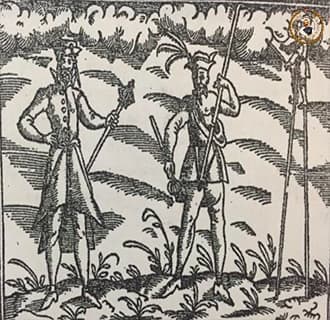
Entertainment Culture in the Ottoman EmpirePicture-38
Billiards in Ottoman:
The Tavernier Travel Book mentions the gambling and billiard game played in Izmir. Although details are not given, it is noteworthy that the name of this game was mentioned in the 17th century. It has been emphasized that large sums of money can also be earned in gambling.30
B. Talent-Based Demonstrations
Turning Plates in Ottoman:
Plate flipping is a game that consists of turning certain sized plates with the help of the mouth, sometimes with the help of the foot. This skill is noted during the travels of the Western traveler Reinhold. The author tells with expressions of astonishment that a young man brought the plates in a basket and started his performance in front of the community. The man who took a three-pronged tool in his mouth and one in his left hand; He slowly placed the plates on the bars and turned them. The man, who also turned a plate in his right hand, attracted the attention of the audience and was watched with great admiration. 31
Magic in the Ottoman Empire:
One of the shows that travelers encounter from time to time is magic. Among Lubenau's observations are magicians who deftly conceal various beings or reveal something new. In a demonstration, a Turk in a caftan enters the square, takes off his caftan and lays it on the ground. Only the private part of the young person is covered.
The man who makes various jumps always reveals something when he pretends to put on his robe and takes it off again. Once he pulls out a cauldron of boiling water and a dove from under the robe. Another time, a black boy emerges from under the robe and runs away from the audience.32
C. Mind Games in the Ottoman Empire
Chess in the Ottoman Empire :
After stating that chess is a game against the religion of Islam, Tournefort says that the Turks were not successful in playing cards or throwing dice. He adds that they occasionally play checkers rather than chess.33
Mangala in the Ottoman Empire :
One of the favorite games of the Turks is the mangala game. Menkele in the travelogue of Tournefort; The game, which is also called mankala in the Thévenot travelogue, is played on a two-winged plane like checkers and with two people. There are pits on each wing, and players aim to fill the pits in their ranks by buying thirty-six seashells. 34
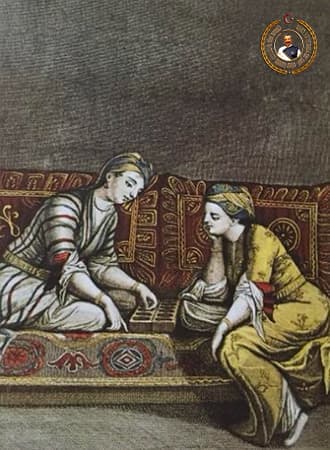
Picture : Turkish Girls Playing Mangala-35
Also, the game itself is made from a tall box about two feet tall and half a foot wide.
has been made. 36
D. Skilled Demonstrations
Walking with Wooden Legs in the Ottoman Empire:
In his book Journey to the City of Sultans, the author says; He mentions some demonstrations organized by Sultan Murad upon the arrival of the Iranian Ambassador to Constantinople. The aim here is to prove to the guests the power of the reign with splendor and fun. Meanwhile, a young man joins the group. He walks around by having a spear-length stick tied around his legs, creating a striking and pleasant sight. 37
Juggler in the Ottoman Empire :
Picture:38
What if the world is an alchemy and a sihrsâz? Meh and mihr slap-dest are just a few jugglers? "Imaginary Mister"
Tournefort states that jugglers gathered in the square near the Bayezid Mosque, entertaining and surprising the people with their performances. The demonstrators are displaying very good dexterity here, demonstrating their skills.39
Karagoz:
Turks do not give up on Karagöz. This game is played in private households. But during the month of Ramadan, the Black Eyes wander from coffee shop to coffee house, and if they collect enough money, they start a show. Karagöz players are usually Jewish. Settling in the corner of a room, they stretch a piece of white cloth and light many oil lamps behind. They start to move the figures with the shadow of their hands on the screen. They sing Turkish and Persian songs from time to time. 40
Fortune in Ottoman:
Fortune tellers should also be mentioned in the entertainment venue. Fortune tellers have a steel wheel in their hands for fortune telling. Various letter characters are printed on this wheel. When people point to one of these, the fortuneteller searches from a book what it means. Some mark by rolling the dice, others by pressing their fingers on one of the letters with their eyes closed. The rest is up to the fortune teller. Baht, fortune, a stolen item, etc. comments on the subjects are listened.41
E. Shows with Animals in the Ottoman Empire
The shows with animals were met with great admiration by the audience as they were both different and interesting. Animals, which are not frequently encountered in the geography in question or perform shows outside of their nature, not only earn money for their owners, entertain the community, but also show their talents, especially on holidays or special days. Sometimes the fights or races of animals among themselves were considered interesting, and sometimes it was enough to be remarkable that these animals were only exhibited in their cages.
In the travelogues, the abilities of the Turks in animal education are emphasized, and such shows are described in detail because they are entertainment that have not been encountered before.42
Especially elephant, ram, lion, gibbon, hyena, wild ass, leopard and horse are the animals mentioned. Of these, lions draw attention with their ferocity; however, it is said that they behaved to the people very naïvely because they were educated. The ram, elephant and gibbon, on the other hand, are described with expressions full of astonishment as they exhibit movements that cannot be considered ordinary. The place where the Hagia Sophia Mosque is located, the vicinity of the Sultan Bayezid Mosque and Constantinople are mostly mentioned as the place where the demonstrations are held. The explanations about animals in the texts are as follows:
Ram:
Reinhold Lubenau, in his travel book, talks about the performances of a Turk with his coach on March 18. Accordingly, the owner of the coach has trained the animal to perform various movements. When he gave him various instructions, the animal also displayed its dexterity to astonish the viewer. Ram; The man entertained the audience by dancing when he sang, climbing up and down stairs or standing on all fours on one hand of his owner.
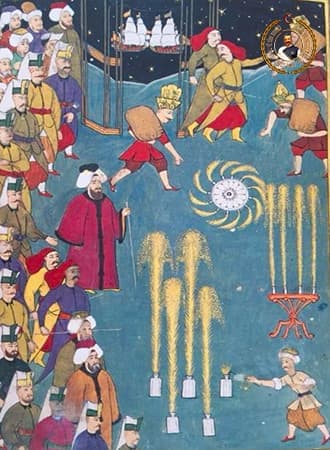
Picture 58: Fireworks displays.
Also, upon the call of its owner, the animal climbed a pole with small laths and waited on the top of the pole with all four feet. The author's narrative does not end there, and it is added that the coach jumped through a ring, walked over his two hind legs, carried a glass with his front legs, rode a horse by imitating Hungarian folk dances, and lay motionless on the ground as if dead. After pretending to be dead, the expression "the butcher has come" indicates that the animal came to life again and escaped. Lubenau's remarks on this subject end by emphasizing that some people can never be trained, although an animal that lacks understanding can be trained like this. 43
Lion:
Salamon Schweigger brings the word to the lions when he talks about the strange animals found in Constantinople. According to this, near the place called Atmeydanı or Hippodromos, St. Sophia mentions a lion cage belonging to the house of worship. Here he mentions the existence of fourteen lions that are always kept tied to ropes. Lions are as untamed as domesticated. They do not harm people even though they are carried around the streets with a rope. When people see these animals, they come to life and watch them happily.44
Both the travelogue writer and Reinhold mention these lions. According to this, some animals are taken care of for the personal entertainment of the Turkish rulers. Lions are one of them. There are eight lion sanctuaries near or adjacent to the church. This place is called Arslanhane. Their caretakers are in great affinity with the lions. They play with them as if they were dogs, and they can put their heads in the mouths of lions.45
Elephant:
The elephants fed in the Constantine palace were specially trained by their caretakers. Elephants, who have many dexterity with their trunks, surprise everyone with their skills. For example, they can throw a ball away, lift a stick from the ground with their trunks. They immediately detect the asper thrown to the ground by the visitors, catch it with their trunks, and hand it to their owners. They also dance by shaking their whole bodies when a small drum is beaten by their caregivers.46 It is quite fun and enjoyable to watch these plays.
Hyena:
According to the narratives among the people, hyenas are animals that eat the dead by removing them from the soil where they are buried. Their most special talent is their ability to understand any language, according to Reinhold. For example, when a caregiver says that the animal is very ugly and looks scary, the animal can't help but act angry. On the contrary, when a positive expression is used, the anger of the animal subsides and it adopts a friendly attitude. It is said that catching this animal is only possible in this way.47
Leopard and Civets:
In Constantinople, there are leopard and civet cats in wooden cages. Civet cats are larger than other cats, bright gray in color, wild and predatory.48
Donkey:
Wild donkeys are usually very timid. They cannot be trained by any means.49
Other Animals:
The Hippodrome, near Hagia Sophia, is a place where the birthday of Jesus of Nazareth is celebrated every year. Here, people from many different places appear before the king and queen in their own attire. In addition, lions, wild donkeys, bears, leopards and other rare animals are exhibited or made to fight each other.50
Animals brought from other countries such as gibbon and parrot are also welcomed by people when exhibited.51
Some people near the Sultan Bayezid Mosque; monkey, horse, goat, dog etc. They make money with the skills they teach animals, and they perform strange and funny games. 52
Horse:
Imrahorbasi, the horse caretaker of the Sultan, takes care of the horses belonging to the Sultan. Because the other people who usually take care of horses are so poor, they earn a kind of extra income by entertaining the public in their remaining time. For example, they play a bagpipe made of goatskin, dance, and perform acts that delight the audience.
After dancing enough, they collect money from the audience. Sometimes these shows are held in groups of six or seven. Sometimes they spice up their show with masks representing various animals. 53
Picture 54: Horse keeper playing the bagpipe in his spare time. Picture 55: Masked rioters.
F. Fun with Vehicles:
Ferris wheel:
On feast days, there are huge wheels, namely Ferris wheels, resembling water mills. There are seating areas suitable for people to sit inside the wheel. Everyone who wants, big or small, sits on the boards and the wheel starts to spin. The wheel turned by someone can also be called “wheel of fortune”. People are at the top and sometimes at the bottom as they turn. Of course, these are prepared a few days before the feast. The wheels turning on the day of the feast give a nice view.56
Swing :
Swinging goncadur rose-sende ?anki from bad-i ahum If I see it swinging on the swing, it would be serv-i rose-endâmı "Sehi Bey's Divan"
It is also worth mentioning the swings set up on the streets during various entertainment days. These are built on one or two piers of high masts on the sides of major streets. There are ropes extending from the poles and a seating arrangement placed on the ropes. People hang on to the ropes and sway as they please. Even the sultan sometimes spends time with these games. According to Schweigger, this game must have emerged because the Turks had no tradition of dancing. Perhaps it is said that they were made to accustom themselves to dizziness so that they could fight better.
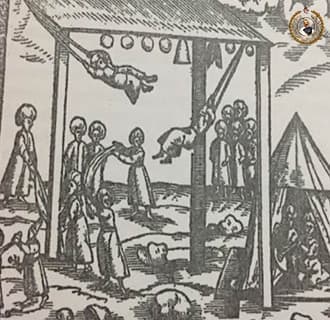
Picture 57: Swings.
Fireworks Displays:
Fireworks had an important place in Ottoman
entertainment culture. Especially at night, fireworks illuminate the surrounding area, resulting in pleasant images. This magnificent show that Canaye mentioned was watched in the garden of Sultan Selim's palace. And the shows that go on for days; It is also exhibited on many special days such as weddings and holidays.59
G. Other Types of Entertainment
Dance Performances:
Dance performances accompanied by music performed at festivals, weddings, holidays or special occasions are remarkable. The people are dignified, always in the same calm and demeanor; According to Tornefort, he dances like crazy on feast days.60
These dances are unique to the Turks and generally do not change. One of the dances of the dancers is halay. The leading player takes a handkerchief and the other players line up. While the boys make countless leaps, the young girls hardly move.61
According to Tounefort, the festivities during the holidays are quite long, boring and embarrassing: “They make up and sing very witty songs every day, and there is hardly any body posture that they do not use in their dances. The festival was a little embarrassing for us and rather boring because it lasted all night.”62
For Schweigger, there is no tradition of dancing among the Turks, instead, various shows are organized and the people are entertained. Lubenau, on the other hand, is because people dance at weddings; however, he mentions that men and women have fun in separate places.
Poetry and Songs:
A large part of the Turks are busy with poetry. There are beautiful and touching parts in his poems and Persian words added in between. Their songs are sung in a different maqam. Although this may not be pleasant at first, as one's ear gets used to it, it starts to sound good over time.63
Music:
Music, which is considered indispensable for entertainment; It is one of the most basic elements of the assembly in weddings, feasts, circumcisions, festivities, triumphs and special celebrations. The musical styles, which vary according to the theme of the entertainment in question, have not escaped the lens of foreign travelers. The discomfort felt by some tearful, harsh, repetitive and complex music was expressed, and the mention of musical instruments was given in detail.
For example, Schweigger says that Turks are very fond of music and that this music generally has a tearful tone. “The musical instruments of the Turks look like a long-handled frying pan with strings on it. It sounds like a violin. While playing this instrument, they sing with a terrible voice.
All the songs have a tearful tone.”64
Especially in the book Journey to the City of Sultans, the war music made to give heroic enthusiasm attracted attention. This music is not welcome. Because they have a harsh, aggressive and disturbing air. Sound inconsistencies and the sound of the music are disturbing. Instruments are sounded in a chaotic and disorderly manner. In addition, it always plays the same melody as war music. Musical instruments are played especially by young boys.65
The Turks have a musical instrument similar to the Cithara. This instrument is similar to the Harp. They take it in their hands and play it with a feathered plectrum and wander the streets in the evenings.
There are also instruments with a long neck and a small body, resembling a tablespoon. 66 Long flutes made of sugar cane, drums struck with thin sticks, instruments in which two bowls made of brass metal are struck together and make a strong sound. There are also long-mouth bagpipes, kopuz, two- and three-stringed violins, and musical instruments made of reed, each with shorter reed pipes than the previous one. Some of them are played morning and evening in the palace of the Turkish rulers.67
Picture 68: Turkish musical instruments
Tambourine:
The musical instrument that caught Lubenau's attention is reminiscent of the tambourine. Because one side of this tool is covered with leather and the other side is like an empty colander. It is surrounded by thin plates made of brass mine. The instrument is played by tapping the fingers against the skin in certain rhythms.
Bell:
Among the instruments of the Turks are large cymbals made of brass. These cymbals, which are also used as a part of the drum today, are depicted in plate size. There is a ring at the top of these plate-sized lids to pass the fingers. Sound is produced when the two covers are slammed together. However, it is more like a sound from the friction of quite a few guns.69
Playing Music with Plates:
The show of making music with plates was noted in the Travelogue of Reinhold. Accordingly, one day, a young man enters the amusement square with a basket in his hand. The young man takes about thirty porcelain plates from his basket. Their sizes are also different from each other. After the man places his plates in a certain order, he hits the bowls and plays nice music and entertains the people.70
Drum:
Nicolas de Nicolay talks about young people playing drums in the Boys' talk. Although they do not have musical talents, they are quite eager to play an instrument. They usually play an instrument called the tambour. They add their own unpleasant voices to it. However, this unpleasant sound can only make goats dance.
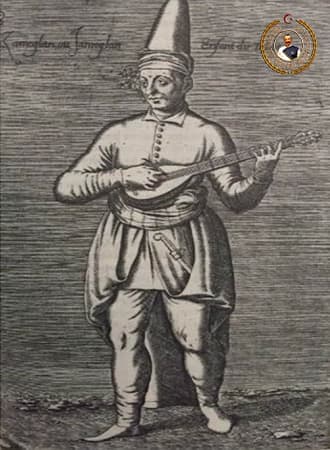
Picture: Noviceoğlan playing the drum.71
Conclusion
For the West, while the Ottoman Empire was seen as a symbol of success, magnificence, adventure, palace and precious jewels, it also became the center of conflict and the "other". This is of course an attitude adopted by travelers visiting Ottoman lands. Because the travelers, who conveyed almost every detail in their travel notes, did not stay away from critical and detailed discourses in their statements. This situation makes its presence felt in a wide range from religious perception to daily life, from illness to entertainment.
In particular, the perception of entertainment, which is the subject of the study, has been examined by almost every traveler and conveyed with many details, both with pictures and words.
Among these travelogues, Chardin Seyahatname does not have entertainment-based details as it is in the type of politics. Salomon Schweigger, in his travel book titled Journey to the City of Sultans, talked about many subjects from Turkish jugglers to swings, from feasts to hammam entertainment.
In addition, many pictures are expressed in a more concrete way. There are finer details and observations in the Travelogue of Tournefort and the Travelogue of Reinhold Lubenau compared to other texts. For example, the game of chess or the plate-turning game is only described in these works. In the remaining travel books, both the name of a play and the entertainments held at a certain time or place are interpreted in similar ways.
In general, the aforementioned forms of entertainment are classified as time, place, subject and entertainment types.
Resources :
Album, 1610 c. , Dublin, Chester Beatty Library,
Adam Werner of Crailsheim, Before the Sultan, Embassy Diary, 1616-1618, Translated by:
Türkis Noyan, Book Publishing House, Istanbul 2011.
Faroqhi, Suraiya, Ottoman Culture and Everyday Life: From the Middle Ages to the Twentieth Century, History Foundation Publications, Istanbul 2005.
http://greatestbattles.iblogger.org/Ottoman/Album/Ralamb.htm?i=1
Jean Baptiste, Van Mour, Tulip Era Painter, Translated by Osman Öndeş, Erol Makzume, Aksoy Publishing, Istanbul 2000.
Jean Chardin, Chardin Travel Book: Istanbul, Ottoman Territories, Georgia, Armenia, Iran, 1671-1673, Translated by Ayşe Meral, Kitap Yayınevi, Istanbul 2014.
Jean Thévenot, Thévenot Travelogue, Translated by Ali Berktay, Kitap Publishing House, Istanbul 2014.
Jean-Baptiste Tavernier, Tavernier Travel Book, Editor: Stefanos Yerasmos, Kitap Publishing House, Istanbul 2006.
Joseps de Tournefort, Travelogue of Tournefort, Editor: Stefanos Yerasimos, Book Publishing House, Istanbul 2013.
Marble, Ahmet, Karamanlı Aynî and his Divan, Akçağ Publications, Ankara 1997.
Michael Heberer von Bretten, A Slave in the Ottoman Empire: Memoirs of Bretten Michael Heberer
1585-1588, Translated by Türkis Noyan, Kitap Publishing House, Istanbul 2016.
By Nicolas de Nicolay, In the Empire of Solomon the Great, Translated by Shirin Tekeli,
Menekşe Tokyay, Book Publishing House, Istanbul 2014.
Reader, Cihan, Cinâni (The Critical Text of His Life-Works-Divan), Turkish Language Institution Publications, Ankara 1994.
Phillppe du Fresne-Canaye, Fresne-Canaye Travelogue 1573, Translated by Teoman Tunçdoğan, Kitap Publishing House, Istanbul 2009.
Reinhold Lubenau, Reinhold Lubenau Travel Book: In the Ottoman Land 1587-1589, Translated by Türkis Noyan, Volume 2, Kitap Yayınevi, Istanbul 2016.
Schweigger, Salamon, Journey to the City of Sultans: 1571-1581, Translated by Türkis Noyan, Kitap Yayınevi, Istanbul 2014.
Stephan Gerlach, Turkey Diary 1573-1578, Translated by Türkis Noyan, Kitap Yayınevi, Istanbul 2007.
Stephanos Yerasimos, Life in the Topkapı Palace-Albertus Bobovius or Memoirs of Santuri Ali Ufki Bey, Translated by Ali Berktay, Kitap Publishing House, Istanbul 2012.
Tarlan, Ali Nihat, Imaginary Divan, Akçağ Publications, Ankara 1992.
Tulum, Mertol, Sûrnâme: Sultan Ahmet's Wedding Book, Kabalcı Publishing House, Istanbul 2008, p. 94.
Yekbaş, Hakan, Sehi Bey's Divan, Bookstore Publications, Istanbul 2010.